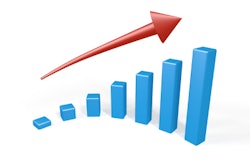Although medical imaging has frequently been considered a major culprit behind the growth of healthcare spending in the U.S., its share among employer-insured individuals actually decreased between 2010 and 2021, researchers have reported.
In fact, imaging's part fell from 10.5% to 8.9% during the decade, according to a team led by first author Michal Horný of Emory University School of Medicine in Atlanta, GA, and senior author Richard Duszak, MD, of the University of Mississippi Medical Center in Jackson. What's more, "nominal spending" (i.e., the sum of payments from health plans and patients to health care providers for imaging and related services) on imaging increased 35.9% from $48.7 billion to $66.2 billion, while spending on all other healthcare services increased by 63.7%. The findings were published March 27 in Health Affairs Scholar.
"[Our study] demonstrates that medical imaging has not been a predominant driver of health care spending growth from 2010 to 2021," it wrote.
Healthcare spending in the U.S. increased from $2.6 trillion in 2010 to $4.3 trillion in 2021 and is expected to grow by 5.4% per year over the next decade, a rate "considered by many to be unsustainable," the authors noted. Over the years medical imaging has been considered a major contributor to increased healthcare spending, and has been subject to a variety of cost-cutting measures that have been mostly aimed at reducing Medicare and Medicaid costs. But spending growth among the employer-insured population (employer-sponsored insurance, or ESI) must also be evaluated, they explained.
"ESI spending directly translates to ESI premiums, the affordability of which for workers has to be supported by tax-exempt employer subsidies costing the federal government approximately $350 billion per year in lost federal tax revenue," the group wrote.
The investigators sought to assess imaging spending among the ESI population via a study that consisted of information from the 2010 to 2021 Merative MarketScan Commercial Database that included 33.9 million individuals; they used the Neiman Imaging Types of Services (NITOS), version 4.0 to identify noninvasive diagnostic imaging services in this data.
The changes varied by modality, according to the researchers.
| Nominal medical imaging price increases by modality, 2010 to 2021 | |
|---|---|
| Modality | Percentage increase |
| CT | 12.4% |
| MRI | 2.4% |
| Nuclear medicine | 40% |
| Use rates by modality, 2010 to 2021 | ||
|---|---|---|
| Modality | 2010 | 2021 |
| CT | 10.2% | 12.1% |
| MRI | 7% | 7.2% |
| Nuclear medicine | 2.7% | 1.5% |
| Ultrasound | 24% | 28% |
| X-ray/fluoroscopy | 56.2% | 51.1% |
Duszak's team also reported the following:
- A 22.9% growth of nominal hospital imaging prices and a 22.6% increase of physician imaging services over the study timeframe -- both rates below a 24.3% inflation rate as measured by the Consumer Price Index.
- A 2.1% increase in the total number of imaging exams from 144 million in 2010 to 147 million in 2021.
- Factors that boosted imaging spending growth included increased use (7.4 percentage points); shifts to advanced modalities (4 percentage points), and demographic changes (3.5 percentage points).
The bottom line? Cost-curbing measures aimed at imaging have been effective -- and that means that policy makers may need to shift their attention to containing other healthcare costs, Duszak told AuntMinnie.com.
"Through policy intervention after policy intervention over the last decade or more, medical imaging has been subjected to multiple, often compounding, payment cuts, based on the assumption that imaging is a disproportionate driver of overall healthcare spending," he said. "Our work shows that assumption to be incorrect. Spending on non-imaging healthcare is growing at a much faster rate now than spending on imaging, and so policy makers seeking to reduce the growth in other non-imaging areas might look to some of the interventions that have been applied to imaging to curb that growth -- and at the same time back off on ongoing pressures to reduce imaging utilization and prices."
The complete study can be found here.



















